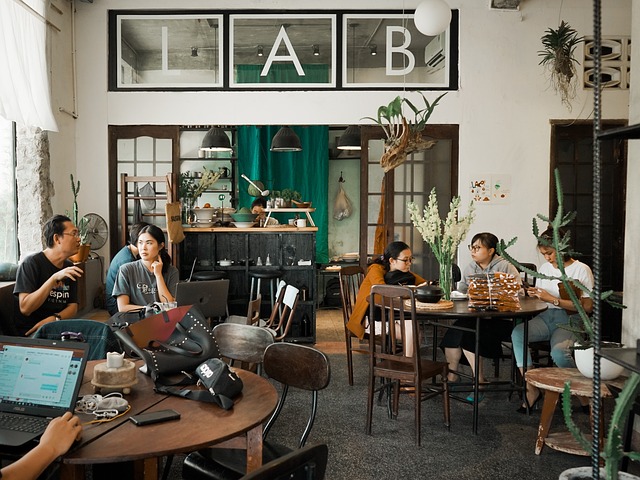In recent years, Augmented Reality (AR) has transcended its initial role as a novel technology and has become a powerful tool in advertising. By seamlessly blending the digital world with the physical one, AR offers a unique way for brands to engage with consumers. This blog post explores how to effectively utilize AR in advertising campaigns, providing a comprehensive guide to harnessing its potential for creating immersive, interactive, and memorable brand experiences.
Understanding Augmented Reality
Before diving into the application of AR in advertising, it’s essential to understand what AR is. Unlike Virtual Reality (VR), which creates an entirely virtual environment, AR overlays digital content onto the real world. This can be achieved through smartphones, tablets, or AR glasses. The technology allows users to interact with digital elements as if they exist in their physical surroundings, providing a dynamic and engaging experience.
Why Use AR in Advertising?
- Enhanced Engagement: AR offers an interactive experience that traditional ads simply cannot match. By allowing users to interact with the brand in real-time, AR creates a more engaging and memorable experience.
- Increased Brand Awareness: Unique and innovative AR experiences can generate buzz and encourage sharing on social media. This organic promotion can significantly boost brand visibility.
- Improved Customer Experience: AR can enhance the shopping experience by providing virtual try-ons, product demonstrations, and interactive content that can help customers make informed purchasing decisions.
- Higher Conversion Rates: Interactive and immersive experiences can drive higher conversion rates as customers are more likely to purchase products they have had a chance to engage with in a meaningful way.
Strategies for Implementing AR in Advertising
1. Interactive Product Demos
One of the most effective uses of AR in advertising is providing interactive product demonstrations. For example, a furniture retailer can use AR to allow customers to visualize how a piece of furniture would look in their own home. By scanning a space with their phone or tablet, users can see a virtual representation of the product in their environment, helping them make more confident purchase decisions.
Case Study: IKEA’s “IKEA Place” app is a prime example of this strategy. It lets users place virtual furniture in their home environments to see how it fits and looks before making a purchase.
2. Virtual Try-Ons
AR has revolutionized the way customers try on products, especially in the beauty and fashion industries. Virtual try-ons allow users to see how makeup, accessories, or clothing will look on them without physically trying them on.
Case Study: L’Oréal’s “ModiFace” technology lets users try on various makeup products virtually. This not only enhances the shopping experience but also drives sales by providing a realistic preview of how products will look on the user.
3. Engaging Social Media Campaigns
Social media platforms are an ideal space for AR campaigns. Brands can create AR filters or effects that users can apply to their photos or videos, encouraging them to share their AR experiences with their followers.
Case Study: Snapchat and Instagram have been at the forefront of AR social media filters. Brands like Nike and Gucci have created custom AR filters that users can use to interact with their products in a fun and shareable way.
4. Interactive Advertisements
AR can transform static advertisements into interactive experiences. For instance, print ads can come to life when scanned with an AR app, providing additional content such as videos, animations, or interactive elements.
Case Study: Pepsi’s “Pepsi Max” campaign utilized AR to create an interactive bus shelter ad that surprised commuters with virtual animations and interactions, turning an ordinary wait into an extraordinary experience. If you are seeking a source of inspiration and guidance about advertising services, visit https://teleadsagency.com/ for further info.
5. Enhanced Event Experiences
Incorporating AR into live events can elevate the attendee experience. From interactive event signage to virtual guides and immersive booths, AR can make events more engaging and memorable.
Case Study: The Coachella music festival has used AR to enhance the festival experience with interactive art installations and exclusive AR content for festival-goers, creating an added layer of engagement and excitement.

Tips for Successful AR Advertising
- Know Your Audience: Tailor your AR experiences to the interests and behaviors of your target audience. Understanding what appeals to your audience will help you create more relevant and engaging AR content.
- Ensure Accessibility: Make sure your AR experiences are accessible to as many users as possible. This means optimizing your AR content for different devices and ensuring it works smoothly across various platforms.
- Focus on User Experience: The key to a successful AR campaign is a seamless and enjoyable user experience. Ensure that your AR interactions are intuitive, user-friendly, and add value to the overall brand experience.
- Track and Analyze Performance: Use analytics tools to track the performance of your AR campaigns. Monitoring metrics such as engagement rates, user interactions, and conversion rates will help you understand the effectiveness of your AR strategy and make necessary adjustments.
- Stay Innovative: AR is a rapidly evolving technology. Stay updated with the latest advancements and trends to ensure your AR campaigns remain fresh and innovative.
Conclusion
Augmented Reality has the potential to revolutionize advertising by creating immersive, interactive, and memorable brand experiences. By leveraging AR for product demos, virtual try-ons, social media engagement, interactive advertisements, and event enhancements, brands can engage consumers in new and exciting ways. As the technology continues to evolve, staying ahead of the curve and continuously innovating will be key to harnessing the full potential of AR in your advertising campaigns. Embrace AR, and watch as it transforms your brand’s connection with its audience.





